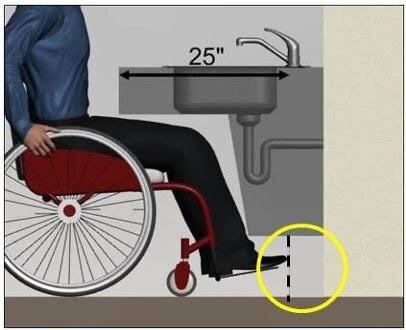
As a homeowner, it’s only natural to want to improve on the basic structure of your home. However, in your excitement to pursue the next DIY home improvement project, you neglect to check whether that project violates your city’s building codes.
Building codes ensure safety and consistency for properties, and they are normally only enforced during building and remodeling projects. The following paragraphs list some practices that violate building codes so you can check if your own project is a danger to itself and its occupants.
Any balusters more than four inches apart from each other are non compliant. This is mainly because small children are in danger of falling between the holes in the posts by this spacing. If they’re more than four inches apart, it would be best to call a carpenter and let them put more balusters between the existing ones.
In bathrooms without operable windows, most municipal construction rules mandate ventilation fans. These fans exhaust steam and humidity through a ceiling or wall vent, preventing moisture buildup that causes peeling paint or wallpaper, warped cabinetry, and mold growth.
Ground-fault circuit interrupters (GFCIs) function similarly to regular outlets, but with one major difference. If the GFCI detects an unusual spike of electricity—which is frequently caused by moisture—it will promptly shut off the power. Many building rules require GFCIs in rooms that are prone to dampness, such as bathrooms, garages, laundry rooms, and kitchens since they help to prevent electric shock.
Wire connections must be placed in a junction box to minimize the possibility of a house fire. This box is a metal or molded plastic box affixed to a wall stud. Many communities insist on having a professional do any wiring changes, so if you feel your home’s wiring is bad, call an electrician immediately.
Hardwired smoke detectors with battery backups are required in most new residences. However, if your home is more than 15 years old, it may lack these critical safety elements. Consider installing hardwired smoke detectors during your next renovation project if you reside in an older home. Meanwhile, make sure every bedroom and corridor has working battery-operated smoke detectors.
If your house has any or all of the abovementioned violations, then it’s time to bring it up to code. Make sure you take care of any potential code concerns as soon as possible too. Now that you know there are building codes for home renovations, you will have guidelines to follow every time you manage and upgrade your house.
Don’t hesitate to go to All Things Inspector if you need a fire door inspection checklist and other topics that might be causes of concern when inspectors visit your home. We are the number one e-learning marketplace, hosting blogs, and many other resources. Check out our online store for specialty tools now!

Certain tools must be in an ADA inspection tool kit without fail. These tools are essential in carrying out an ADA inspection. They include a

The Americans with Disability Act (ADA) is a federal law that is against discrimination against individuals with disabilities. This law is designed to ensure equal
